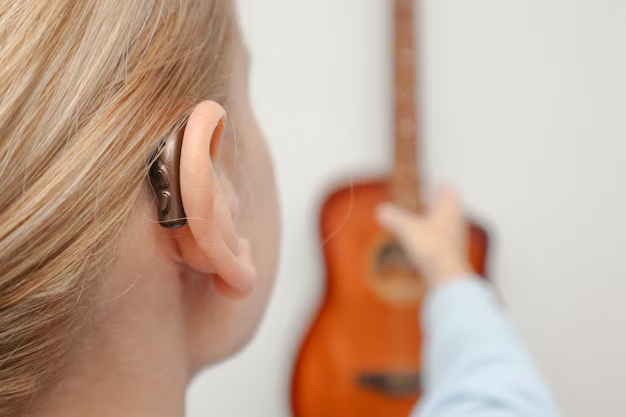Navigating Insurance Billing for Standard BTE Hearing Aids: What You Need to Know
Exploring the financial side of hearing aids, particularly the behind-the-ear (BTE) variety, can be daunting. Understanding what to bill insurance for regarding a standard BTE hearing aid is crucial for ensuring you're not out-of-pocket more than necessary. This comprehensive guide aims to demystify the process, offering insights, practical tips, and advice without wandering into the realm of medical counsel.
🎧 Understanding the Standard BTE Hearing Aid
What is a BTE Hearing Aid?
Behind-the-ear (BTE) hearing aids are devices designed to help those with hearing loss. They are known for their versatility and ability to accommodate varying degrees of hearing loss, from mild to profound. The device typically rests behind the ear, with a tube connecting it to an ear mold inside the ear canal. Key features include durability, ease of use, and compatibility with various ear shapes and sizes.
Benefits of Standard BTE Hearing Aids
- Versatility: Suitable for a broad range of hearing losses.
- Long Battery Life: Typically longer-lasting than smaller devices.
- Durability: Built to withstand regular use.
- Ease of Handling: Larger size makes them easier to handle.
🏦 Decoding Insurance Coverage for Hearing Aids
Navigating insurance coverage for hearing aids can be a complex process. Various factors, including the specific insurance provider, plan, and state mandates, will impact what can be billed.
Insurance Coverage Basics
- Policy Specifics: Know your policy. Not all insurance plans cover hearing aids or related services.
- State Mandates: Some states require insurance companies to offer certain hearing aid benefits.
- Coverage Limitations: Be aware of possible cap amounts or percentage-based coverage.
Commonly Covered Costs
- Hearing Tests: Diagnostic tests to assess hearing ability.
- Devices: The actual hearing aid, although specific models may or may not be covered.
- Fitting Fees: Costs associated with initial fitting and tuning.
- Follow-up Services: Coverage may include follow-up care and adjustments.
📜 How to Bill Insurance for BTE Hearing Aids
Billing insurance for a BTE hearing aid involves several steps, typically starting with consultation and ending with successful reimbursement or coverage.
Key Steps in the Billing Process
- Consultation with an Audiologist: An audiologist can provide necessary medical justification.
- Gathering Documentation: Keep a detailed record of all tests, fittings, and recommendations.
- Understanding CPT Codes: Familiarize yourself with Current Procedural Terminology codes used for billing.
- Submitting Claims: Ensure claims are complete and submitted in a timely manner.
Common Challenges
- Denials and Appeals: Understanding common reasons for claim denials can prepare you for the appeals process if necessary.
- Complex Forms: Properly completing complex forms is essential to avoid delays.
💡 Practical Tips for Maximizing Insurance Benefits
📋 Essential Steps for Success
- Review Your Policy Thoroughly: Before purchasing a hearing aid, understand what aspects are covered by your insurance.
- Seek Pre-authorization: Inquire if pre-authorization is necessary and advisable for your insurance plan.
- Documentation is Key: Keep a detailed record of all communications and documentation regarding your hearings aids, from initial diagnosis to fitting and follow-up appointments.
Tips for the Billing Process
- Be Proactive: Contact your insurance provider directly to clarify what specific costs are covered and understand any requirements for reimbursement.
- Utilize Resources: Audiologists and clinics often have resources available to assist with the insurance process.
- Regular Follow-ups: Be persistent with follow-ups on submitted claims to ensure everything is processed correctly.
📈 Related Considerations in Hearing Aid Insurance
Variability in Coverage
Insurance coverage for hearing aids can vary widely not only from provider to provider but also within different plans offered by the same insurer. This variability can make the billing process more challenging and necessitates close attention to your specific plan details.
Long-term Costs
Consider long-term costs such as maintenance, batteries, and potential repairs or replacements that may not be fully covered by insurance. Understanding these costs upfront can help in making informed financial decisions.
📑 A Snapshot: Key Takeaways for Billing Insurance for BTE Hearing Aids
Here’s a quick overview to summarize the process and critical steps to take when billing insurance for standard BTE hearing aids:
- 🧾 Comprehensive Review: Always start by reviewing your specific insurance policy for coverage specifics.
- 👩⚕️ Professional Guidance: Use audiology consultations to leverage professional documentation and justification.
- 📂 Documentation: Maintain impeccable records, including all correspondence, claims, and insurance forms.
- 🏛️ Understanding Codes: Familiarize yourself with CPT codes applicable to hearing aid billing.
- 🖋️Submit Claims Promptly: Ensure timely submission of claims and understand the appeals process if needed.
In conclusion, while the process of billing insurance for a standard BTE hearing aid might seem intricate, with the right knowledge and proactive measures, you can navigate this terrain more confidently. Assess your needs, tap into professional guidance, and communicate clearly with your insurance provider to maximize your coverage and minimize out-of-pocket expense.

Related Topics
- a Plus Hearing Aid Centers
- a Real Pain Showtimes Near Centerville
- Are Airpods Bad For Your Ears
- Are Apple Second Generation Airpods Hearing Aids
- Are Audien Hearing Aids Just Amplifiers
- Are Costco Hearing Aids As Good As Others
- Are Costco Hearing Aids Good
- Are Hearing Aid Domes Interchangeable
- Are Hearing Aid Subscriptions Worth It
- Are Hearing Aid Tax Deductible